Report >> |
8. Patients who died
| Key findings |
| Introduction |
| Appropriateness of referral |
| Clinical management of cases |
| Supervision of cases |
| Assessment of cases |
| Recommendations |
Clinical management of cases
One aspect of the advisors expert opinion was whether or not there were clearly identifiable opportunities for different management. In particular were any of the admissions to ICU considered avoidable? Table 6a shows that 21% of admissions were considered avoidable and Table 6b shows the reasons for this decision. In 21 cases it was felt that different care (including earlier recognition of clinical deterioration) could have resulted in clinical improvement and avoided the need for ICU care. In 58 cases it was felt that due to the lack of reversibility of disease process, a treatment limitation order could have been made which would have included non-escalation to ICU care. This figure for potentially avoidable admissions is in keeping with the literature 1.
| Table 6a. ICU admissions that were avoidable | ||
| Admission avoidable? | Total | (%) |
| Yes | 83 | (21) |
| No | 313 | (79) |
| Sub-total | 396 | |
| Insufficient data | 43 | |
| Total | 439 | |
| Table 6b. Reasons why admissions were considered avoidable | |
| Reason ICU admission could have been avoided (Answers may be multiple) |
Total n = 83 |
| Different care could have prevented need for admission | 21 |
| Treatment limitation decision could have avoided admission | 58 |
| Other | 9 |
| Total | 88 |
Each of the cases were graded on a nine point scale, where one = very poor and nine = excellent. Aspects of clinical management that were assessed using this method were: airway management, management of breathing, management of the circulation, use of monitoring and oxygen therapy. The findings are presented in Figures 1-5.
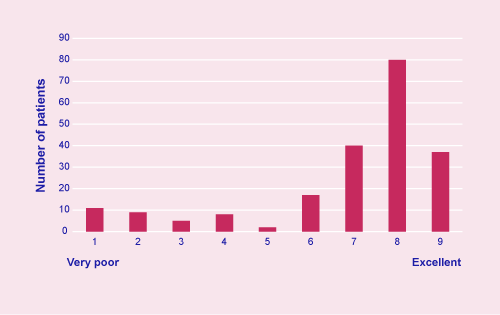
Figure 1. Airway management n=209
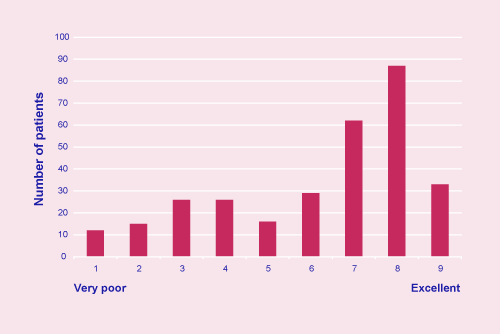
Figure 2. Breathing management n=306
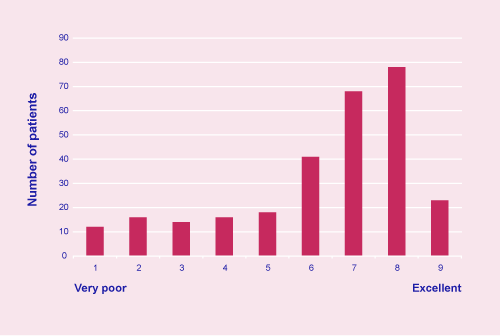
Figure 3. Circulation management n=286
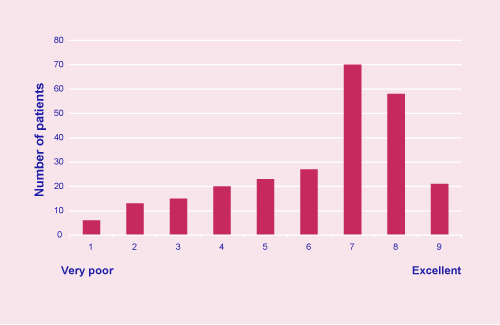
Figure 4. Monitoring n=235
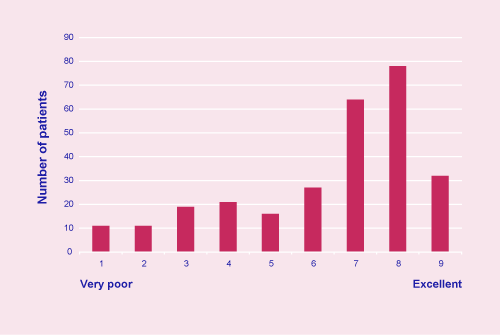
Figure 5. Oxygen therapy n=279
As can be seen, these domains were generally rated highly. However, although there is a skew to the higher end of assessment there were still a significant number of cases that gave cause for concern. Cases were rated at the very end of the spectrum (grades 1-3) with respect to management of the
airway (11%), breathing (16%), circulation (14%), monitoring (13%) and oxygen therapy (14%). This is particularly worrying as previous work has shown that suboptimal management of these aspects of
care may be associated with increased morbidity, mortality and avoidable admissions to critical care 1.